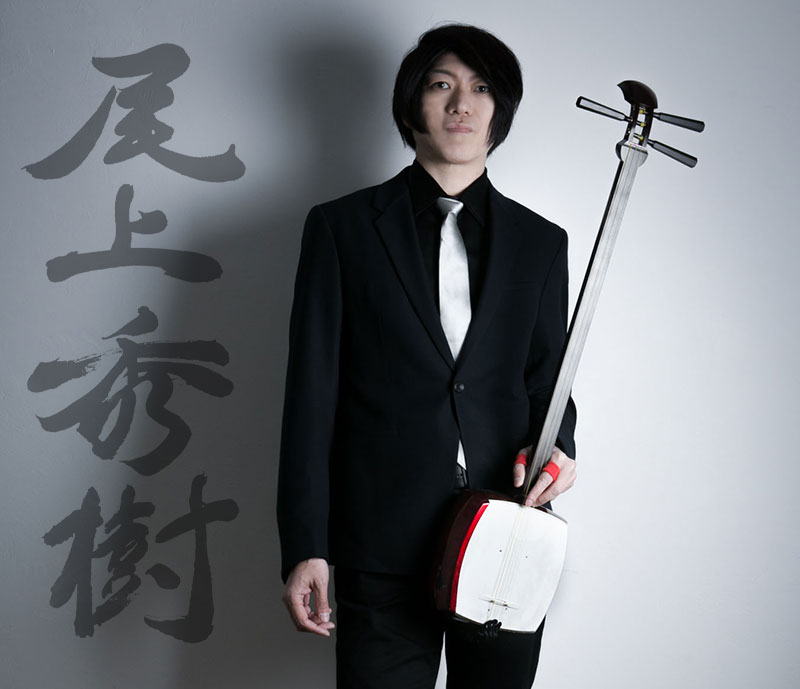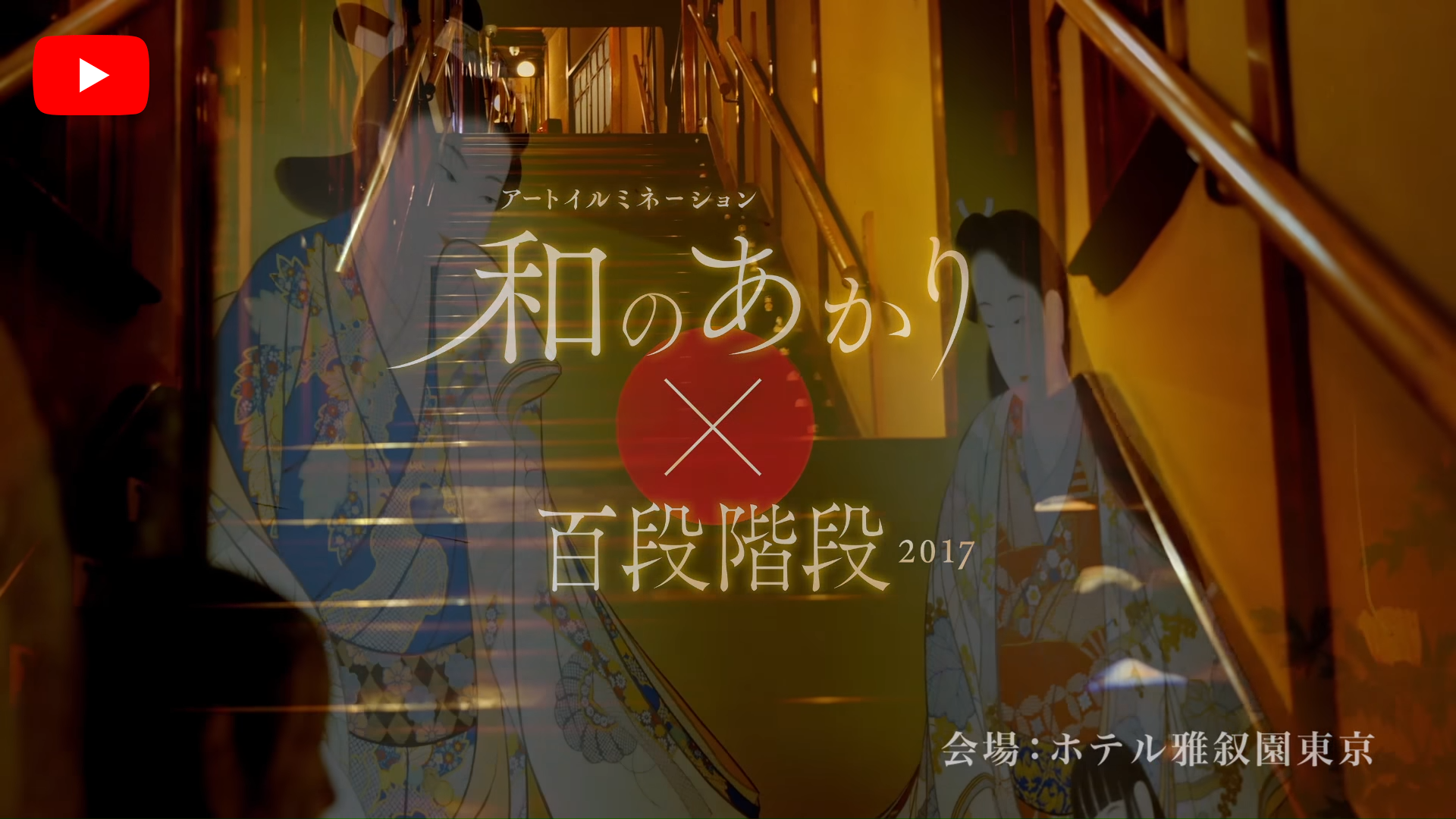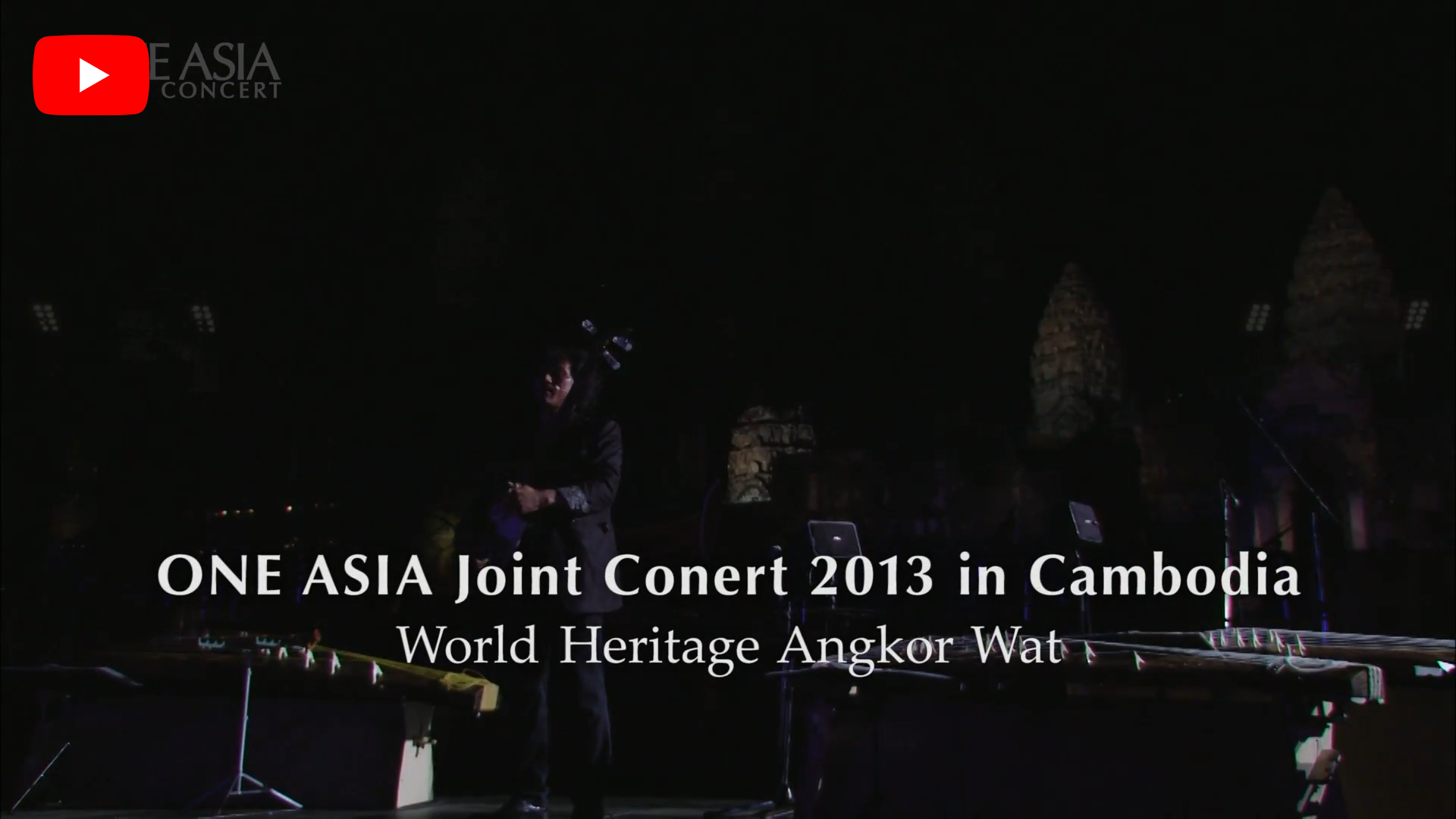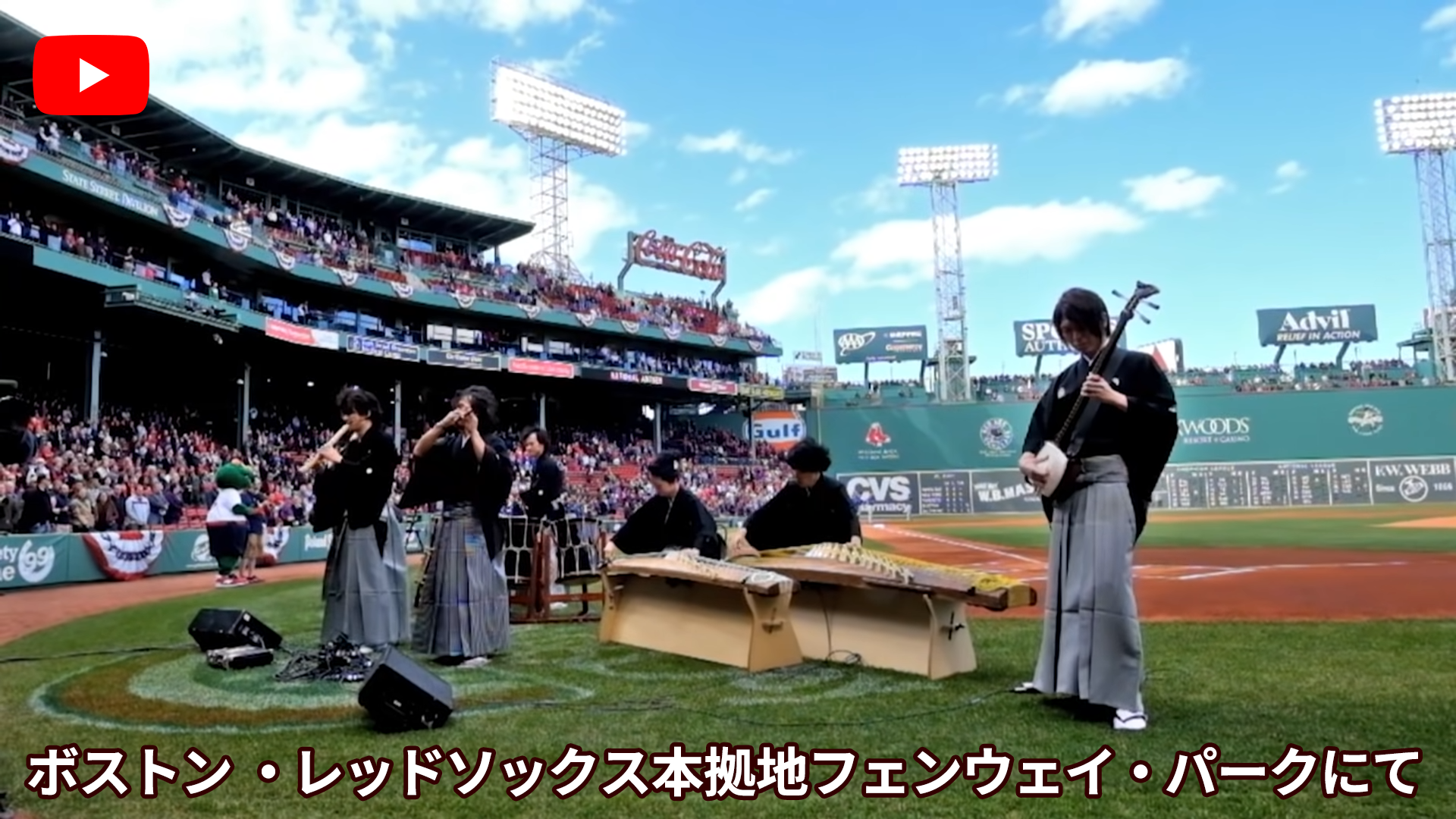The Origin of Shamisen
(three-stringed musical instrument)
The oldest one-to-three stringed musical instrument can be traced back to the so-called nefert depicted on the wall of an ancient mausoleum at Akolis, Egypt. The shamisen is considered to have originated from the Chinese instrument sanxian (“three strings” in Chinese). It is considered to have been perfected during the Yuan Dynasty by adopting various elements in the process, such as from the Persian setar (literally “three strings” in Persian language), tanbur, a folk instrument of Central Asia, Western Asia and India, and also a four-stringed Chinese fiddle called kokyu in Japanese. The sanxian crossed the ocean from the continent to the Ryukyu Kingdom (current Okinawa) around 1390. In the Ryukyu Islands, it went through a “regional evolution” of becoming a little smaller, and was renamed sanshin (“three strings”), which became a popular accompanying instrument to the folk music of the Ryukyu Islands.
From Ryukyu to Japan
There are two theories as to how the sanshin came to Japan from Ryukyu. It is important to understand that there were itinerant Buddhist lay-priest biwa (Japanese lute) performers in Japan when the instrument was imported during the 1500’s. According to one theory, biwa performers got hold of a two-stringed-instrument covered with snake skins that was imported to the port of Sakai (part of current Greater Osaka) from Ryukyu, and eventually they converted it to a three-stringed instrument. Another theory has it that when some biwa performers visited Ryukyu, they saw a performance of the sanshin, and later they made their own three-stringed instrument based on the biwa. It took about 30 more years to perfect the shamisen during the Azuchi-Momoyama Period.
Further Development in Japan
The lay-priest biwa performers would often play the shamisen to accompany their street preaching. The performers were commoners, not of either warrior or aristocrat class. As the shamisen was used by performers of the commoner class, it became widely accepted by the common people. In the 1700’s, when the shamisen became one of the accompanying instruments to kabuki plays, it gained almost explosive popularity. During that period, music was class-specific: the aristocrat class had their own genre of music called gagaku; the warrior class had their music associated with Noh called nohgaku; and a group of mendicant zen priests called komuso had their music played by the bamboo flute called shakuhachi, which they played as they traveled from place to place. Before the shamisen became available, the common people only had the flute and some percussion instruments. The shamisen, being the first stringed instrument for them, was passionately embraced. As more and more people began to appreciate the instrument, the shamisen became more precise, and its playing technique became adopted to a wide variety of music.
Categories of Shamisen Music
Shamisen music can be classified into two categories: Utaimono, or “Ones for Singing” and Katarimono or “Ones for Recitation.”
Utaimono
This category is specialized to deliver the melody or tune to the audience. It subdivides into “jiuta,” “nagauta,” “soukyoku,” and so on.*Jiuta
This is the oldest form of shamisen music. It developed in an area centered around Kansai (area encompassing Kobe, Osaka and Kyoto) as an art form for blind musicians to sing while playing stringed instruments. Later, that art form was adopted in Edo (current Tokyo) as the accompaniment to kabuki, and eventually it came to be known as nagauta in Edo. While shamisen music is often seen incorporated in the stage music of kabuki and jyoruri (a form of dramatic narrative chanting to shamisen accompaniment), jiuta has diffused to all parts of Japan independent of the theatrical arts.*Soukyoku
Soukyoku is an ensemble in which a koto plays in concert with the singing. Koto players are often capable of playing the shamisen and also singing. This genre came into being towards the end of the Age of Provincial Wars (1467~1615). When it embraced the shamisen as an accompanying instrument, its popularity was further enhanced. It started to incorporate jiuta towards the end of the Edo Period. The chemistry of such combination enhanced further development. The well-known “Sakura Sakura” is a piece of soukyoku music.*Nagauta
Nagauta is rooted in jiuta that originated in Kansai. Since the 17th century, it started its evolutionary process as part of stage music for kabuki. As it received a variety of musical influence from various art forms such as jyoruri, it came to acquire its iconic flamboyant sound and rhythm. Typically, the chanting and the playing of shamisen are done by separate independent performers. In the later half of the 19th century, nagauta came to be enjoyed as a genre of music in its own right.Katarimono
This category of music is specialized to deliver narration. It includes heikebiwa, gidayu, bungo & tokiwatsubushi and so on.
*Heikebiwa
This is a genre of music specifically designed to accompany the recitation of Heike Monogatari or “The Tale of the Heike.” At one point, the biwa performers, who narrated the story, switched their instrument from the biwa to the shamisen as they discovered that the shamisen was lighter and more manageable. The warrior class and haiku poets were fond of heikebiwa as a piece of classical music. Later, jiuta sprang out of the tradition of heikebiwa.*Gidayu
Gidayu has become relatively well-known since bunraku (Japanese puppet theater) was registered on UNESCO’s list of intangible cultural heritages. Bunraku is also known as puppet jyoruri. Gidayu is a type of music played at the puppet jyoruri. In 1684, Gidayu Takemoto founded Takemotoza, a puppet theater in Osaka. It was in this theater he originated his namesake narrative chant. It is powerful and gripping, and can make puppets seem alive. A gidayu narrated by a female chanter is called onna gidayu, literally, “female gidayu.”*Bungobushi
This is a type of jyoruri created by Bungonojyo Miyako in the 1700’s. Jyoruri here refers to the dramatic text recited with a unique chanting. Mojitayu Tokiwazu, a disciple of Bungonojyo, created tokiwazubushi or “tokiwazu narrative chanting” based on gidayu narrative chanting. More evolution was to follow. In time, toyomotobushi spun off from tokiwazubushi, and in the 1800’s, Enjyudayu Kiyomoto originated kiyomotobushi. These three spin-off from bungobushi are called bungosanryu or “Bungo Three Styles,” but each of them has its own distinctive appeal.
The Origin of Shamisen
(three-stringed musical instrument)
The oldest one-to-three stringed musical instrument can be traced back to the so-called nefert depicted on the wall of an ancient mausoleum at Akolis, Egypt. The shamisen is considered to have originated from the Chinese instrument sanxian (“three strings” in Chinese). It is considered to have been perfected during the Yuan Dynasty by adopting various elements in the process, such as from the Persian setar (literally “three strings” in Persian language), tanbur, a folk instrument of Central Asia, Western Asia and India, and also a four-stringed Chinese fiddle called kokyu in Japanese. The sanxian crossed the ocean from the continent to the Ryukyu Kingdom (current Okinawa) around 1390. In the Ryukyu Islands, it went through a “regional evolution” of becoming a little smaller, and was renamed sanshin (“three strings”), which became a popular accompanying instrument to the folk music of the Ryukyu Islands.
From Ryukyu to Japan
There are two theories as to how the sanshin came to Japan from Ryukyu. It is important to understand that there were itinerant Buddhist lay-priest biwa (Japanese lute) performers in Japan when the instrument was imported during the 1500’s. According to one theory, biwa performers got hold of a two-stringed-instrument covered with snake skins that was imported to the port of Sakai (part of current Greater Osaka) from Ryukyu, and eventually they converted it to a three-stringed instrument. Another theory has it that when some biwa performers visited Ryukyu, they saw a performance of the sanshin, and later they made their own three-stringed instrument based on the biwa. It took about 30 more years to perfect the shamisen during the Azuchi-Momoyama Period.
Further Development in Japan
The lay-priest biwa performers would often play the shamisen to accompany their street preaching. The performers were commoners, not of either warrior or aristocrat class. As the shamisen was used by performers of the commoner class, it became widely accepted by the common people. In the 1700’s, when the shamisen became one of the accompanying instruments to kabuki plays, it gained almost explosive popularity. During that period, music was class-specific: the aristocrat class had their own genre of music called gagaku; the warrior class had their music associated with Noh called nohgaku; and a group of mendicant zen priests called komuso had their music played by the bamboo flute called shakuhachi, which they played as they traveled from place to place. Before the shamisen became available, the common people only had the flute and some percussion instruments. The shamisen, being the first stringed instrument for them, was passionately embraced. As more and more people began to appreciate the instrument, the shamisen became more precise, and its playing technique became adopted to a wide variety of music.
Categories of Shamisen Music
Shamisen music can be classified into two categories: Utaimono, or “Ones for Singing” and Katarimono or “Ones for Recitation.”
Utaimono
This category is specialized to deliver the melody or tune to the audience. It subdivides into “jiuta,” “nagauta,” “soukyoku,” and so on.*Jiuta
This is the oldest form of shamisen music. It developed in an area centered around Kansai (area encompassing Kobe, Osaka and Kyoto) as an art form for blind musicians to sing while playing stringed instruments. Later, that art form was adopted in Edo (current Tokyo) as the accompaniment to kabuki, and eventually it came to be known as nagauta in Edo. While shamisen music is often seen incorporated in the stage music of kabuki and jyoruri (a form of dramatic narrative chanting to shamisen accompaniment), jiuta has diffused to all parts of Japan independent of the theatrical arts.*Soukyoku
Soukyoku is an ensemble in which a koto plays in concert with the singing. Koto players are often capable of playing the shamisen and also singing. This genre came into being towards the end of the Age of Provincial Wars (1467~1615). When it embraced the shamisen as an accompanying instrument, its popularity was further enhanced. It started to incorporate jiuta towards the end of the Edo Period. The chemistry of such combination enhanced further development. The well-known “Sakura Sakura” is a piece of soukyoku music.*Nagauta
Nagauta is rooted in jiuta that originated in Kansai. Since the 17th century, it started its evolutionary process as part of stage music for kabuki. As it received a variety of musical influence from various art forms such as jyoruri, it came to acquire its iconic flamboyant sound and rhythm. Typically, the chanting and the playing of shamisen are done by separate independent performers. In the later half of the 19th century, nagauta came to be enjoyed as a genre of music in its own right.Katarimono
This category of music is specialized to deliver narration. It includes heikebiwa, gidayu, bungo & tokiwatsubushi and so on.









Hideki Onoue
Composed the music for: the stage drama Taiheiyo Jyokyoku (“Prelude to the Pacific Ocean”); the theme song for the movie “Twilight Sasara Saya” ; the song “Moonlight Station” for the musical band Sekai No Owari; the music for the computer game “Touken Ranbu” (“Ecstatic Sword Fight”), and others.
Played the shamisen and arranged the music on the occasion of commemorating Yaeko Mizutani’s 50th Anniversary of her stage/acting career at the Meiji Theater.
Since June sixth of the year he was six years old, started studying the shamisen under the Fujimoto School Grand Master Yaoji Fumimoto, who happens to be his mother.
While continuing to practice the shamisen, started playing the base electric guitar for a rock band in the 90’s.
When the band disbanded in 2001, returned to playing the middle-neck shamisen. Started collaborating with shakuhachi player Hideki Ishigaki and formed the band “Hide x Hide” in 2006.
As Hide x Hide :
In 2007, released a CD titled “Japan ~ Neo-Japanesque” under the label Sony Music Direct.
In 2010, won the first prize and Jury’s Special Award at The First Terem Crossover International Competition at St. Petersburg, Russia.
Released the following CD albums, in Japan and Russia: “Nostalgia” in 2010, “Onko Chishin” in 2012, and “Encounter” in 2013.
Have done concert tours to Russia over twenty times, and also to Inner Mongolia, Spain, Lithuania, Vietnam, etc.
Provided music for a Asahi TV program “Shuriken Sentai NinNinja” (“Shuriken Ninja Squad”), the computer game “Monster Hunter Rise,” “Samurai Spirits,” “Smash Brothers wiiU,” “Monster Strike,” etc.
Have appeared on Asahi TV program “Concert Without Title,” and others.
As member of AUN J-Classic Orchestra ( traditional Japanese musical instruments):
In 2008, joined as a founding member.
Have released a series of CDs and DVDs.
Have conducted musical tours titled “World Heritage Tour” at Mont Saint-Michel, Angkor Wat, Croatia, Dubrovnik, Munakata Grand Shrine in Fukuoka, etc.. Tours continue to present.
Wrote the music “From The Far East ~ A Road to The Reiwa Era ~” for the CD featuring Maki Ooguro. (Lyrics and singing by Maki Ooguro, music by Hideki Onoue.)